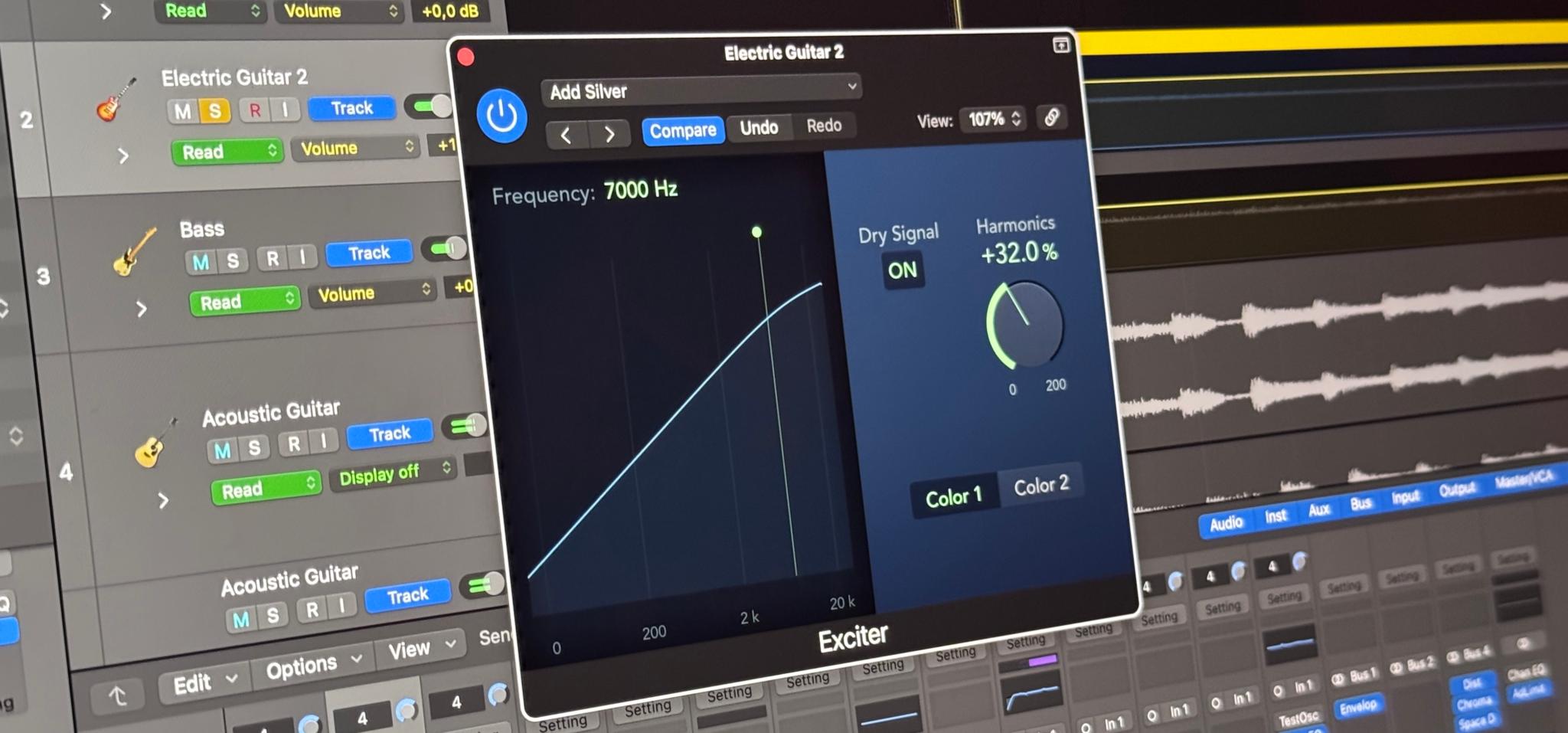Music and sound are built upon vibrations that our ears interpret as tones. These tones have a lowest frequency, known as the fundamental, and additional higher frequencies called harmonics. The way these harmonics blend with the fundamental creates the timbre or tone color we recognize in different voices and instruments. This summarized document explores the core concepts of fundamentals, harmonics, timbre, odd and even harmonics, practical audio production uses, and some advanced considerations like aliasing and resonances. Each section includes an introduction to guide you through the topics.
Table of Contents
- The Fundamental Frequency
- What Are Harmonics in Audio: Building Blocks of Timbre
- How Harmonics Shape Timbre
- Odd vs. Even Harmonics
- Practical Applications in Music and Audio Production
- Advanced Topics: Nonlinear Harmonics, Aliasing, and Resonances
- Conclusion
The Fundamental Frequency
The fundamental frequency is the lowest frequency in a musical note. It defines the pitch we hear, such as the note A4 near 440 Hz. The ear usually perceives this fundamental as the note’s main identifier.
Why the Fundamental Is So Important
The fundamental is sometimes called the first harmonic. It anchors our perception of pitch. When an instrument or voice produces a note, the fundamental carries the largest energy. We usually latch onto it as the defining pitch.
Even when the fundamental is weak or missing, our hearing can infer it. This effect is known as the missing fundamental phenomenon. Small speakers that cannot reproduce deep bass frequencies still trigger our brain to perceive the intended low note, thanks to clues from the remaining harmonics.

Real-World Example
A tuning fork produces an almost pure tone close to one frequency. That single frequency acts like the fundamental. It sounds very plain because there are almost no additional harmonics. In contrast, a guitar string vibrating at the same fundamental frequency delivers more harmonics, creating a richer, more complex sound.
When people sing or play instruments, the fundamental is the strongest frequency we detect. If someone sings “C” at around 261 Hz, that vibration forms the pitch we recognize. Without this base frequency, musical notes would lose their clear sense of identity.
What Are Harmonics in Audio: Building Blocks of Timbre
Above the fundamental, there are additional frequencies that shape the character of a tone. These extra frequencies are called harmonics. They appear at integer multiples of the fundamental. Musicians and audio engineers rely on these harmonics to determine the timbre of different sounds.
Defining Harmonics
If the fundamental is f, the second harmonic is 2f, the third harmonic is 3f, and so on. These harmonics, also termed overtones, combine with the fundamental to form a complex waveform. Even when you do not hear them as separate pitches, they are still present.
In many musical instruments, these harmonics line up in orderly, integer-multiple steps. Strings, air columns, and certain percussion instruments produce these coherent harmonic series, which give them a pleasing tonal quality. The ear recognizes the fundamental as the pitch. The harmonics blend to create the overall sonic character.

Harmonic Series in Instruments
When a guitar string vibrates, it not only vibrates as a whole but also in halves, thirds, and other subdivisions. Each partial vibration generates harmonics at double, triple, or quadruple the fundamental frequency. Instruments like violins, flutes, and trumpets follow a similar pattern. These integer relationships keep the sound tonal and focused.
Some sources have overtones that do not fit this simple integer pattern. These are called inharmonic overtones. Percussive sounds like bells or metal chimes can have frequencies that do not match neat multiples of the fundamental. These inharmonic overtones lead to less-defined pitches or metallic timbres. In a wind chime, you may sense a vague pitch, but the sound feels more complex due to these irregular overtones.
Harmonic vs. Inharmonic
- Harmonic overtones: Integer multiples of the fundamental. They contribute to a clear sense of pitch.
- Inharmonic overtones: Frequencies that do not align with whole-number multiples. They create exotic or less focused sounds, often heard in bells or gongs.
Harmonics determine whether a note feels consonant or dissonant. A harmonic series blends smoothly, while inharmonic partials can generate a less stable impression. This distinction is key to understanding why certain instruments sound “pitched” and others produce more ambiguous tones.
How Harmonics Shape Timbre
Timbre refers to the distinct tonal flavor that differentiates one instrument or voice from another, even when they play the same pitch. Harmonics form the main ingredient of a sound’s timbre. By altering or emphasizing specific harmonics, the color of a tone changes.
The Role of Harmonic Content
When an instrument produces a note, its harmonic profile includes a series of overtones of varying amplitudes. Some instruments emphasize higher harmonics, which can create a bright or sharp tone. Others emphasize lower or midrange harmonics, producing warmth or mellowness.
A sine wave is the simplest form of sound, containing just a fundamental frequency without extra harmonics. This pure tone sounds sterile or plain. Conversely, a sawtooth wave contains all integer harmonics, making it bright and buzzy. A square wave has only odd harmonics, giving it a hollow, reedy quality.
Waveform Examples
Different waveforms illustrate how harmonic content shapes timbre:
- Sine Wave: Only the fundamental frequency. No additional harmonics. Sounds pure and whistle-like.
- Square Wave: Contains odd harmonics. The abrupt transitions in the waveform create a nasal or hollow sound.
- Sawtooth Wave: Includes even and odd harmonics. It has a sharper, more intense quality.
Musical instruments fall somewhere between these extremes. A flute tone might be closer to a sine wave, while a bowed violin might exhibit a richer overtone series with pronounced upper harmonics.

Material and Resonance
Instruments are built from materials that alter their harmonic balance. Wood, metal, and other substances color the resulting sound. A clarinet’s cylindrical bore favors odd harmonics in its lower register, while a saxophone’s conical shape allows a mix of even and odd. These physical differences lead to each instrument’s unique timbre.
Vocal timbre follows a similar principle. Singers shape their mouth cavity to boost certain harmonics, defining vowel sounds. This filtering process, known as formant shaping, highlights specific frequency regions in the harmonic structure.
Odd vs. Even Harmonics
Harmonics come in two categories: odd (3rd, 5th, 7th, etc.) and even (2nd, 4th, 6th, etc.). This difference can significantly affect how a tone is perceived. Even harmonics often bring warmth, while odd harmonics can add brightness or edge.
How Even Harmonics Affect Tone
Even-numbered harmonics align with simple musical intervals, such as octaves. If the fundamental is f, the second harmonic is 2f, which is one octave above. These intervals blend cleanly and reinforce the original pitch. When even harmonics dominate, a sound can feel thicker or more euphonic. Many acoustic and tube-based systems generate more even harmonics, resulting in the classic “warm” tones people love.
How Odd Harmonics Affect Tone
Odd harmonics do not line up as direct octaves of the fundamental. The third harmonic, for example, is an octave plus a fifth above the fundamental. This relationship introduces a more complex quality. When odd harmonics are strong, the result can be bright, cutting, or edgy. Electric guitar distortion often produces an abundance of odd harmonics, which gives the instrument its aggressive feel.
Musical Examples
- Clarinet’s Lower Register: Primarily odd harmonics, creating a reedy and hollow sound.
- Saxophone: Broad balance of odd and even harmonics, leading to a full, buzzing character.
- Tube Amps: Tend to introduce even-order harmonic distortion, adding thickness.
- Transistor or Digital Distortion: Often boosts odd harmonics, enhancing brightness or harshness.

When these harmonics interact with each other, the overall tone can become either sweet or biting. Audio engineers and players leverage this distinction to shape sound textures, whether aiming for warmth or edge.
Practical Applications in Music and Audio Production
Audio engineers and musicians manipulate harmonics to refine the tones of voices and instruments. By adjusting harmonic balance, they can enhance clarity, warmth, or brightness within a mix. The following sections explore how harmonics are used in EQ, saturation, mixing, and sound design.
Equalization (EQ) for Tone Shaping
An EQ selectively boosts or cuts specific frequency ranges. It does not generate new harmonics, but it can emphasize or reduce existing ones. Imagine a snare drum that rings sharply around a particular harmonic. By cutting that range, you dampen its overtones and achieve a tighter sound. Conversely, boosting high frequencies of a vocal can highlight pleasant harmonic “air” at the top end.
EQ is often the first tool for controlling timbre. It helps re-balance instruments so they fit better together. If a guitar’s harmonics clash with a vocal’s harmonic region, a gentle EQ cut can allow the vocal to stand out.
Harmonic Enhancement Through Saturation
Saturation and distortion add new harmonics by intentionally pushing a signal beyond linear limits. This can make a dull recording sound more alive. A subtle tape saturation or tube amplifier generates mostly even-order harmonics. These extra overtones strengthen the existing fundamental and can add warmth, making tracks feel richer.
A transistor-based fuzz pedal can inject more odd harmonics, giving a guitar an aggressive edge. Exciter plugins also exist, creating high-frequency harmonics to add clarity or sparkle to dull tracks. These processes should be used in moderation. Excessive saturation may yield harsh, muddy results.

Using Harmonics in Mixing
Sound professionals manage harmonics to prevent overlapping frequencies from causing clutter. Different instruments occupy different harmonic spaces. If two elements share a strong emphasis around the same harmonic frequency, they can mask each other. An engineer might reduce certain harmonics in one instrument to let another stand out.
Sometimes, deliberately adding harmonics to a bass instrument helps it remain audible on small speakers. Distorting the low end can create midrange harmonics that laptops or smartphones reproduce. This technique ensures the fundamental’s “feeling” remains, even if the speaker cannot handle deep bass frequencies.
Sound Design and Synthesis
Synthesis often revolves around generating and controlling harmonics. Additive synthesis explicitly sums many sine waves (fundamentals plus harmonics) to form a complex tone. Subtractive synthesis starts with harmonically rich waveforms and filters out frequencies. Changing the filter cutoff shifts which harmonics remain, drastically affecting the resulting timbre.
In an organ patch, adding or removing specific harmonic drawbars reshapes the sound’s spectrum. This approach lets a musician craft timbres from bright and brassy to soft and mellow. By mastering harmonic manipulation, sound designers can produce anything from natural instrument emulations to futuristic soundscapes.
Advanced Topics: Nonlinear Harmonics, Aliasing, and Resonances
While fundamental concepts explain the basics of harmonics, there are deeper technical phenomena that affect real-world audio. Nonlinear processes, aliasing in digital systems, and resonances in instruments or rooms all play pivotal roles in shaping sound.
Nonlinear Harmonics
When audio equipment or plugins receive a strong signal, they can introduce nonlinearities. This can happen in tube amps, transistors, or digital processors running into clipping. These nonlinear responses create new harmonics beyond the original frequency content.
Clipping can be symmetrical or asymmetrical. Symmetrical clipping often yields more odd harmonics. Asymmetrical clipping can produce stronger even harmonics. Each design, from vintage vacuum tubes to modern solid-state devices, has a unique harmonic signature. People sometimes refer to the total amount of added frequencies as Total Harmonic Distortion (THD).
High-fidelity audio gear tries to minimize THD. Musical gear often aims to produce certain desired distortions for character. Guitar pedals are prime examples. They intentionally color the tone with strong harmonic generation, giving each pedal a distinct voice.
Aliasing in Digital Audio
Aliasing is a digital artifact that occurs when frequencies exceed the system’s sampling limit. Audio sampled at a certain rate cannot accurately represent signals above half that rate. Any frequency beyond this Nyquist threshold can fold back into the audible range as false, inharmonic frequencies.
In practice, heavy distortion or wave-shaping can create harmonics above the Nyquist frequency. Without proper filtering or oversampling, these additional components appear as unwanted artifacts. They may sound harsh, metallic, or “computer-like.” Good digital processors include filters or higher internal sample rates to avoid audible aliasing.
Resonances
Resonances are frequencies that objects or spaces amplify strongly. Musical instruments have natural resonant modes that boost some harmonics more than others. This adds color to a violin or piano and can also create wolf notes where a specific pitch becomes overly prominent.

In rooms, room modes occur at frequencies related to the space’s dimensions. These cause some notes to boom or cancel out, affecting how music is heard. Engineers address these resonances with acoustic treatments. Microphone placement can also minimize harsh resonance effects. Recognizing resonances helps in both live performance setups and studio mixing, as controlling them yields a more balanced, honest sound.
Conclusion
Harmonics lie at the heart of every musical tone. They define the richness and color of sounds, from the simplest sine waves to the most complex orchestral textures. By understanding how fundamentals and harmonics work, audio enthusiasts gain the power to appreciate, manipulate, and create a vast range of sonic experiences.
A sound’s character depends on the interplay between its fundamental frequency and its harmonics. Instruments, voices, and mechanical systems all produce complex spectra that our ears interpret as vibrant tones. Audio production techniques harness these relationships, shaping how each element fits within an overall mix. By learning to identify, control, and enhance harmonics, you can transform raw audio into artful sonic expressions. Ultimately, the study of harmonics underscores how art and science unite in every musical note.
Informazioni sull'autore

Néstor Rausell
Cantante, Musicista e Specialista in Marketing dei ContenutiNéstor Rausell è il cantante principale della band rock "Néstor Rausell y Los Impostores". Lavora presso MasteringBOX come specialista in marketing.
Lascia un commento
Log in per commentare


